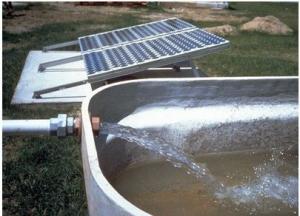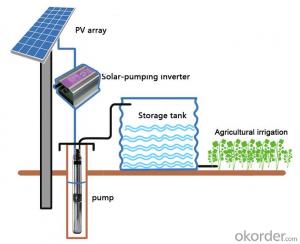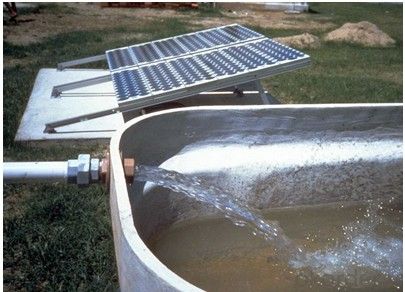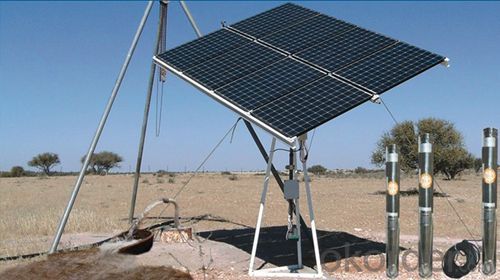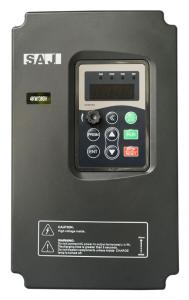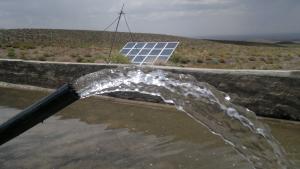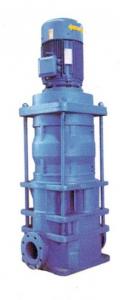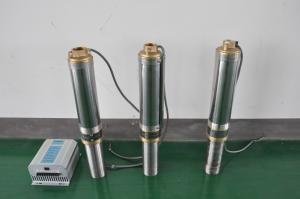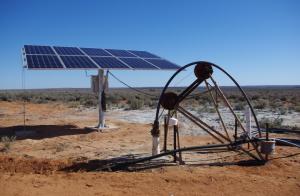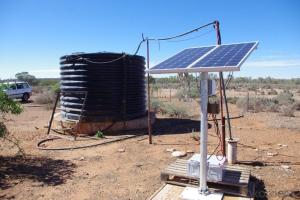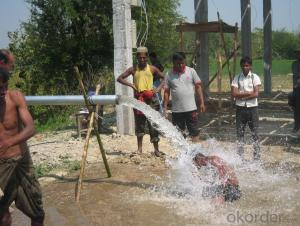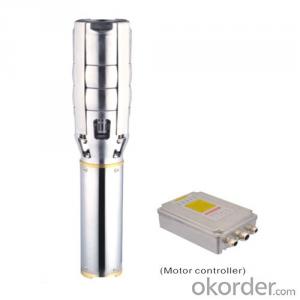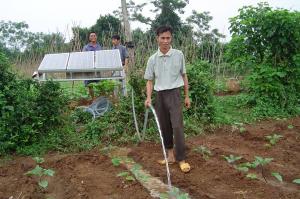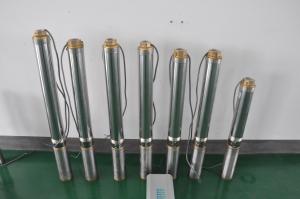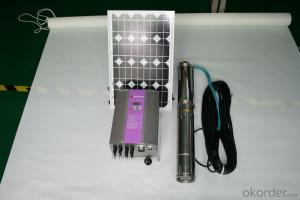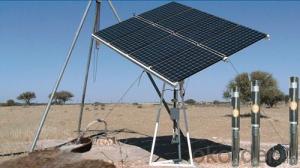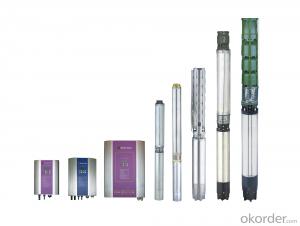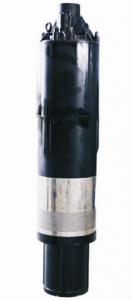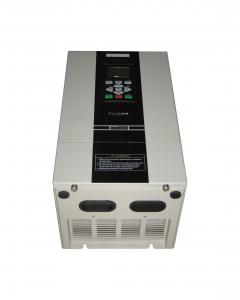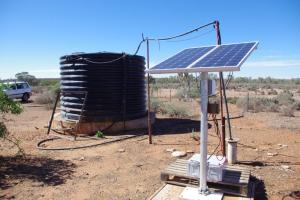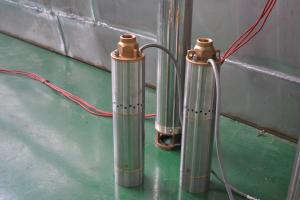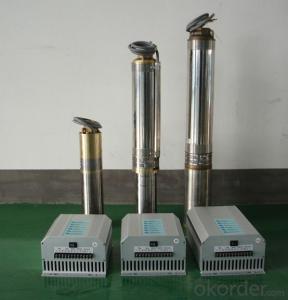Pondmax Solar Pump - Passive Solar Water Heater for Irrigation
- Loading Port:
- Shanghai
- Payment Terms:
- TT OR LC
- Min Order Qty:
- 1 set
- Supply Capability:
- 1000 set/month
OKorder Service Pledge
OKorder Financial Service
You Might Also Like
Passive Solar Water Heater Solar Pumps For Irrigation
DC solar water pumping system consists of the motor, pump, controller, solar array and some other accessories, such as water level sensor, float switch, etc. Considered that storing water is more efficient than storing electricity, the system is designed to directly drive the pump without battery which can reduce the construction and operating cost and routine maintenance effectively.The PV array consists of multiple solar panels connected in series/parallel, which can supply the whole system as power source by converting the absorbed solar radiation energy to the electrical energy. The pump driven by a brushless DC permanent magnet motor draws water from deep-well or river. The pumped water is then fed into reservoir or water tank, or connected to the irrigation system or fountain system directly.
Advanced Technology
Applications Innovation
The efficiency of DC brushless permanent magnet motor has been increased up to 25% in comparison with traditional asynchronous motor.
Technology Innovation
Stator and rotor are sealed by environment friendly casting resin.Motor insulation resistance can be hold higher than 300MΩfor more than 10 years, which consumedly increased the security and reliability of the submersible motor.
Structure Innovation
Casting resign technology processed stator and rotor as well as the water lubricated bearing make the submersible pump environment friendly.
Feature
High Efficiency & High Reliability
DC Brushless Permanent Magnet Motor
Minimum Maintenance, long Service Life
Environment Friendly Materials, Lubricated Without Oil
Application
Village or Family Water Supply
Animal Drinking Water & Livestock Watering
Garden/Courtyard Irrigation
Swimming Pool
Water Supply for Bivouac or Camping Car
Water Supply for Remote Area
Automatic Control
Operate Automatically, No Need Watching
Maximum Power Point Tracking (MPPT)
Dry-run Protection
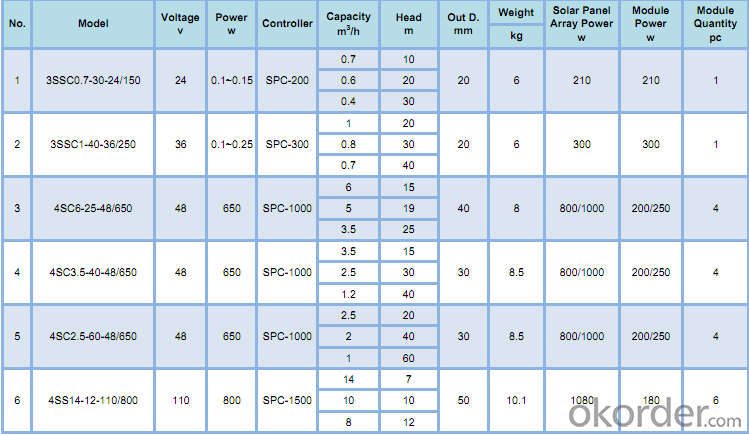
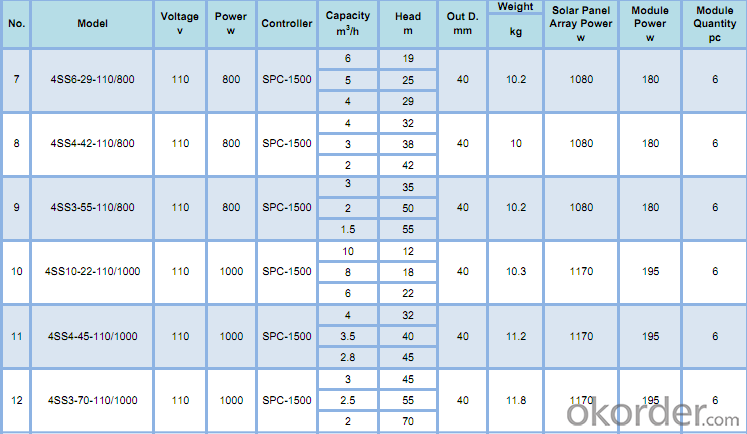
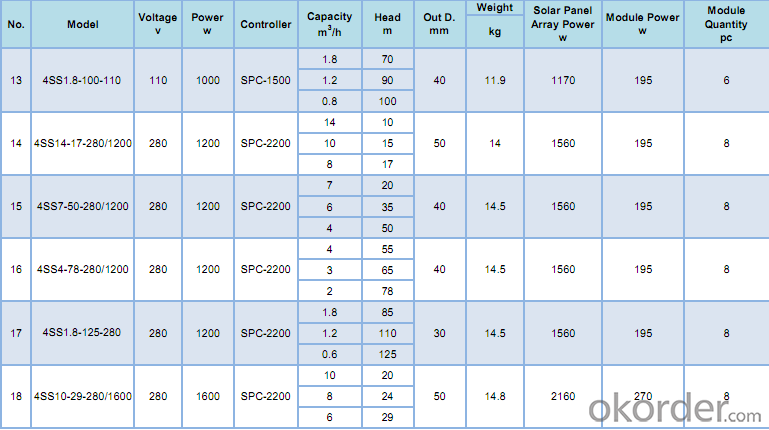
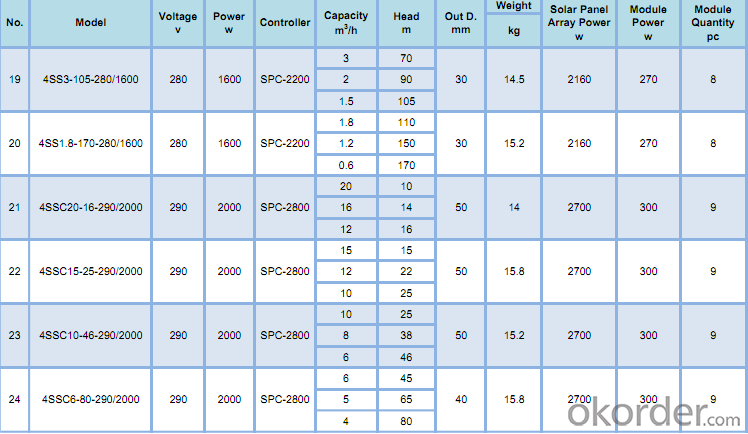
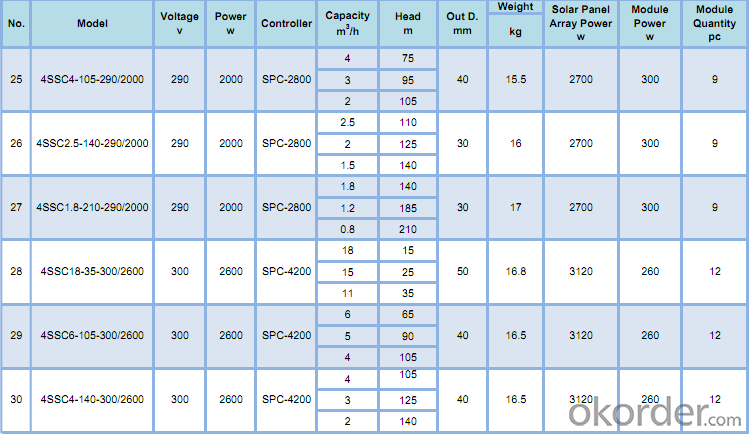
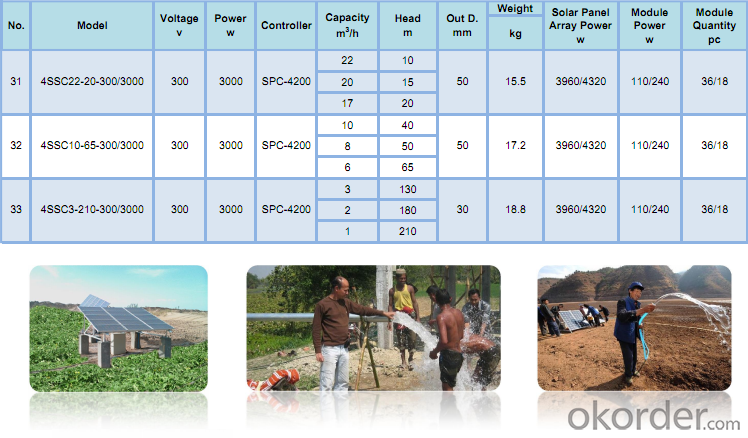
- Q: Are there any size restrictions for solar pumps?
- No, there are no specific size restrictions for solar pumps. The size of a solar pump can vary depending on the specific application and requirements.
- Q: How do solar pumps handle water with high ammonia or chemical content?
- Solar pumps can handle water with high ammonia or chemical content by using corrosion-resistant materials in their construction. These pumps are typically made of materials such as stainless steel or thermoplastic, which can withstand the corrosive effects of ammonia and chemicals. Additionally, they are equipped with specially designed seals and gaskets to prevent leakage and ensure the pump's longevity.
- Q: Can a solar pump be used for water supply in remote islands?
- Yes, a solar pump can be used for water supply in remote islands. Solar-powered pumps are an excellent solution for remote locations where access to electricity may be limited or nonexistent. They harness energy from the sun to power the pump, drawing water from a well or other water source and supplying it to the desired location. This makes them a sustainable and cost-effective option for providing water supply in remote islands without relying on traditional power grids.
- Q: How does a solar pump handle water pH levels?
- A solar pump does not directly handle water pH levels, as its primary function is to pump water using solar energy. However, the materials used in the construction of the pump, such as the pump casing and impeller, may be designed to withstand a range of pH levels. The actual management of water pH levels would typically involve other components or systems, such as water treatment or filtration units, which can be integrated with the solar pump setup if necessary.
- Q: Can solar pumps be integrated with existing water systems?
- Yes, solar pumps can be integrated with existing water systems. The use of solar pumps allows for a sustainable and environmentally friendly approach to water pumping. By harnessing solar energy, these pumps can effectively pump water and be seamlessly integrated into existing water systems, reducing dependency on traditional energy sources and lowering operational costs.
- Q: What is the role of sensors in a solar pump system?
- The role of sensors in a solar pump system is to monitor and measure various parameters such as solar radiation, water levels, pressure, and temperature. These sensors provide crucial data that helps optimize the performance and efficiency of the pump system. They enable the system to adjust pump speed, water flow, and other parameters in real-time, ensuring optimal energy utilization and preventing damage or malfunction. Overall, sensors play a vital role in enhancing the functionality, reliability, and overall performance of a solar pump system.
- Q: What is the expected noise level generated by a solar pump system?
- The expected noise level generated by a solar pump system is typically very low or almost negligible. This is because solar pump systems operate using photovoltaic panels to generate electricity, which powers the pump without the need for any moving parts or combustion engines. As a result, these systems produce minimal noise, creating a quiet and peaceful environment.
- Q: Can a solar pump be used in remote areas with no access to the power grid?
- Yes, a solar pump can be used in remote areas with no access to the power grid. Solar pumps are specifically designed to operate using solar energy, which means they do not require any connection to the power grid or any other external power source. They have solar panels that capture sunlight and convert it into electricity to power the pump. This makes them an ideal solution for remote areas where electricity infrastructure is limited or unavailable. Solar pumps can be used for various purposes, such as agricultural irrigation, livestock watering, and even household water supply, providing a sustainable and reliable source of power in off-grid locations.
- Q: Can a solar pump be used for water supply in remote agricultural farms?
- Yes, a solar pump can be used for water supply in remote agricultural farms. Solar pumps are an efficient and cost-effective solution for providing water to remote areas where access to electricity may be limited. They utilize solar energy to power the pump, reducing the dependence on traditional fuel sources and providing a sustainable water supply solution for agricultural activities in remote locations.
- Q: How does the tilt angle of the solar panels affect the performance of a solar pump system?
- The performance of a solar pump system heavily relies on the tilt angle of the solar panels. Optimum tilt angles guarantee maximum absorption of solar energy, leading to efficient pump operation. The angle at which sunlight hits the panels is influenced by the tilt angle of the solar panels. By modifying the tilt angle, we can enhance the exposure of the panels to sunlight during various seasons and throughout the day. Typically, the tilt angle should correspond to the latitude of the installation site. For instance, a tilt angle close to 0 degrees would be suitable for locations near the equator, while higher latitudes require an increased tilt angle to capture sunlight at an improved angle. When solar panels are set at their ideal tilt angle, they receive sunlight more directly, resulting in increased solar radiation absorption. This, in turn, leads to higher energy generation and improved overall performance of the solar pump system. Conversely, if the tilt angle is set too steep or shallow, the panels may not receive sunlight at the optimal angle, resulting in reduced energy production. Steep angles can cause excessive shading and lower energy output, while shallow angles may lead to less efficient energy absorption. Furthermore, the tilt angle also affects the self-cleaning capabilities of the solar panels. Proper tilt angles enable rainwater to wash away dust and debris, ensuring clean panels and optimal energy generation. It is crucial to note that the tilt angle of solar panels can be adjusted seasonally to accommodate changes in the sun's position throughout the year. By optimizing the tilt angle, solar pump systems can operate at their peak efficiency, maximizing energy production and ensuring dependable pump performance.
Send your message to us
Pondmax Solar Pump - Passive Solar Water Heater for Irrigation
- Loading Port:
- Shanghai
- Payment Terms:
- TT OR LC
- Min Order Qty:
- 1 set
- Supply Capability:
- 1000 set/month
OKorder Service Pledge
OKorder Financial Service
Similar products
Hot products
Hot Searches
Related keywords
